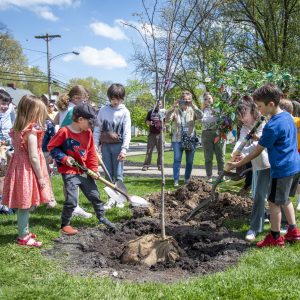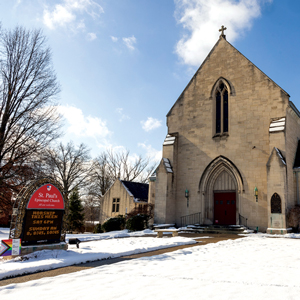connecting to the Pittsburgh region

CONNECT is the Congress of Neighboring Communities, an umbrella organization that encompasses the city of Pittsburgh and neighboring communities. There are currently 44 municipalities in the group.
CONNECT came about in 2009, in response to the need for communities facing similar issues that crossed borders. In contrast to the suburban South Hills Area Council of Government (SHACOG) that Mt. Lebanon is a member of, CONNECT’s members share a proximity with the city. Original membership was limited only to Pittsburgh and first suburbs that shared a border with Pittsburgh, but it has since grown to include communities that border a border community.
“Our original idea for CONNECT was, if you crossed the border from Pittsburgh to any of its neighboring communities, if it weren’t for the signs you would have no idea you were in a different community,” says Kristen Maser Michaels, CONNECT’s executive director. “We’ve since expanded to include other communities that have things in common with Pittsburgh and with each other.”
Planner and Assistant Manager Ian McMeans is Mt. Lebanon’s liaison to CONNECT.

“It’s a good resource,” he says. “There are differing levels of experience among managers, and lots of good information being shared.”
One idea that came from the last meeting is a clearinghouse of upcoming utility company projects. So if a major road is torn up for work by one utility company, the affected municipality would be able to know if that same section of road was scheduled to be dug up in the near future by another utility company, and could put off complete restoration of the road until all projects are completed.
The utiility clearninghouse, called Coordinate Pennsylvania, is similar to the successful Pennsylvania One Call program, where anyone planning a project that involves excavation only needs to make one phone call to learn the location of all of the underground piping in the area.
The way Coordinate Pennsylvania came about is typical of CONNECT’s process. Several communities agreed that lack of coordination among municipalities and utility companies was a problem. CONNECT researched the problem to determine what was currently being done and what solutions were viable. The group then convened Utility Summits that afforded municipalities, utility company representatives and other stakeholders an opportunity to meet and talk. Representatives from Pennsylvania One Call offered to take on the project, using software they already had.
McMeans sees that idea as a real-world practical solution to a problem shared by many communities, solved by intragovernmental coordination. Other opportunities exist to share knowledge and resources with smaller communities on issues such as stormwater management, which was one of the first two issues CONNECT addressed, along with public transportation.
Each year at its annual conference, CONNECT issues resolutions that detail areas it plans to address in the coming year. This year’s priorities are transit oriented development, the opioid crisis, shortage of volunteer firefighters, gun violence, the disappearing tree canopy and meeting human service needs of a varied population.
“The issues we deal with are all based on what our membership wants,” says Michaels. “We get people together to see what we can do and how we can do it.”





